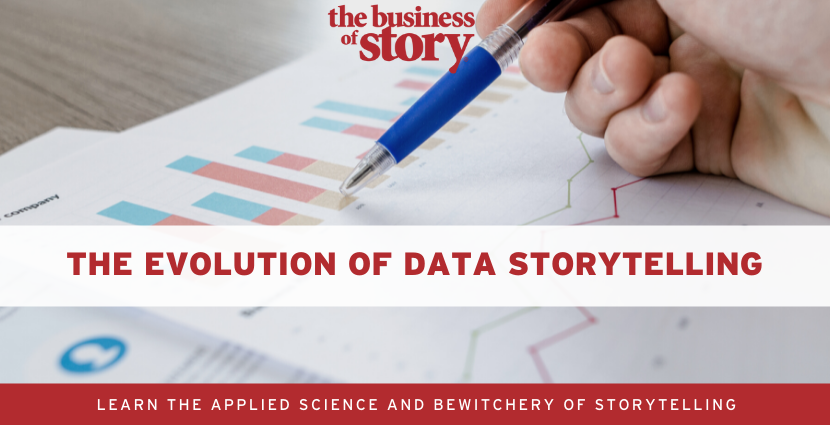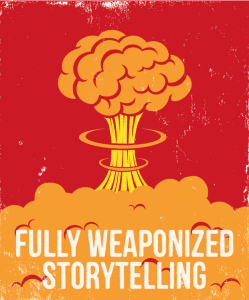Do some marketers have issues with whether to share stories or share data? The solution to this problem is to share both. While you could share them individually, you will be more effective in sharing both. It is called data storytelling.
Storytelling and data are considered opposite ways to appeal to customers. However, this is faulty logic. The fact that something is creative does not mean it cannot be analytical, and the fact that it is good with numbers does not mean it can’t be good with words. It can easily be both! And proof of this is in the evolution of data storytelling.
While both are effective individually, they are far better together and yield better results that way. You use one to create emotional connections while the other earns their trust. While one is painting a picture, the other is proving the reality of that picture. They are perfect together. You could say that; COVID-19 wave has reduced in states where many people are vaccinated. However, a better way to put it is this: COVID-19 transmission rate has declined by 99.5% in states where at least 80% of the people are vaccinated.
The latter one tells the story better. This is because it tells the story to the audience and proves it, making it more believable.
Data and storytelling both have pros and cons, and content marketers have had to make their point with each other. Thankfully, that is no longer the case. Instead, they can now make their point known using the two-in-one technique.
Data analytics is advancing and becoming increasingly valuable for marketing, and now brands have access to a large amount of data for their marketing. Marketers now understand their customers, how and why they use their services and products, and how they will prefer to use their service in the future. That is the level of insight that data gives. However, it can also be the basis for a great story.
Data storytelling: what is it?
Data storytelling is a marketing formula that combines data and stories. For example, comparing text-only articles to articles with infographics or charts showed that texts with visuals get 34% more social engagement. Also, 20% more readers scrolled through to the end of the page.
However, data storytelling is more than just adding graphs or charts to a story to prove a point. The story emerges from the data in this case.
This is a relatively new term and is still evolving with business functions, and organizations rely more on data to influence their decisions. For example, for a company’s marketing department to make data more actionable, relatable, and meaningful to the executive boards, they must tell stories internally through data.
For content marketers, however, data stories have to do more than influence their decisions. It has to engage the audience and share information that they otherwise would not get elsewhere. Data stories have to explain and explore why and how data changes with time through several linked visualizations. While visualization plays a crucial role in data stories, it is only part of a three-part strategy.
According to a Senior Director Analyst at Gartner, the critical components of a story are the beginning, midpoint, and end. However, the end must not be a fixed event, instead of a series of questions or options that trigger the audience to take action.
Different ways of telling data stories
Use personalized stories to celebrate customer relationship
Everybody loves good stories, especially ones written about them. This is what makes a personalized data story effective. It is also a means for businesses to encourage their audience to share their data with them, as they know it will be put to creative use.
Spotify is an example of a brand using this. They have an annual Wrapped campaign to give back to the users as a means of thanking them for the data they are providing. At the end of the year, customers get an email to log into the platform for an interactive and customized experience with data about most played songs, genres, and artists and total minutes streamed.
Create a data story with customer experience
Some brands engage their audience with data. For other brands, customers make payments for data. In short, data is more meaningful and valuable with a good story. Your personalized data stories must have a beginning, middle, and an open end that makes them more effective.
Use visual storytelling to simplify complex data
Brands and business organizations are not alone in telling data stories. This is a strategy that governments have adopted to simplify complex data sets about the needs and wants of the citizens in an easily digestible format.
The District Transportation Department in Washington has launched an interactive website displaying and summarizing traffic data for commuters to understand when and where traffic congestion is a problem.
However, the District Mobility Project is more than just several maps with orange and red line to indicate heavily congested roads. Instead, this website breaks the data down into “stories” about different types of commutes like biking, walking, public transportation, personal vehicles, and so on. Each story has key insights, graphs, and stats to help citizens improve their travel time.
Connect brands to customer’s challenges
This works particularly for B2B brands that need to demonstrate how well they understand their audience’s challenges to engage them and win their trust. Indeed, it will be more effective to back up the claims about customer’s problems with some real-time data. This makes the brand more convincing, and it becomes easier to win the prospect’s trust like this.
Data storytelling is on the rise, and it is evolving in the marketing world. This is how marketers use data analytics to tell compelling stories. With the effectiveness of this storytelling method and its likely mass adoption, it is going to be the go-to storytelling method in no time. No longer do marketers have to choose between using data and sharing stories to reach their audience. With data storytelling, they can do both at once and get more results.
Jessica Chapman is a writing editor from Chicago. She works as a college paper writer at a professional writer service. She is into sport and politics and enjoys traveling.










